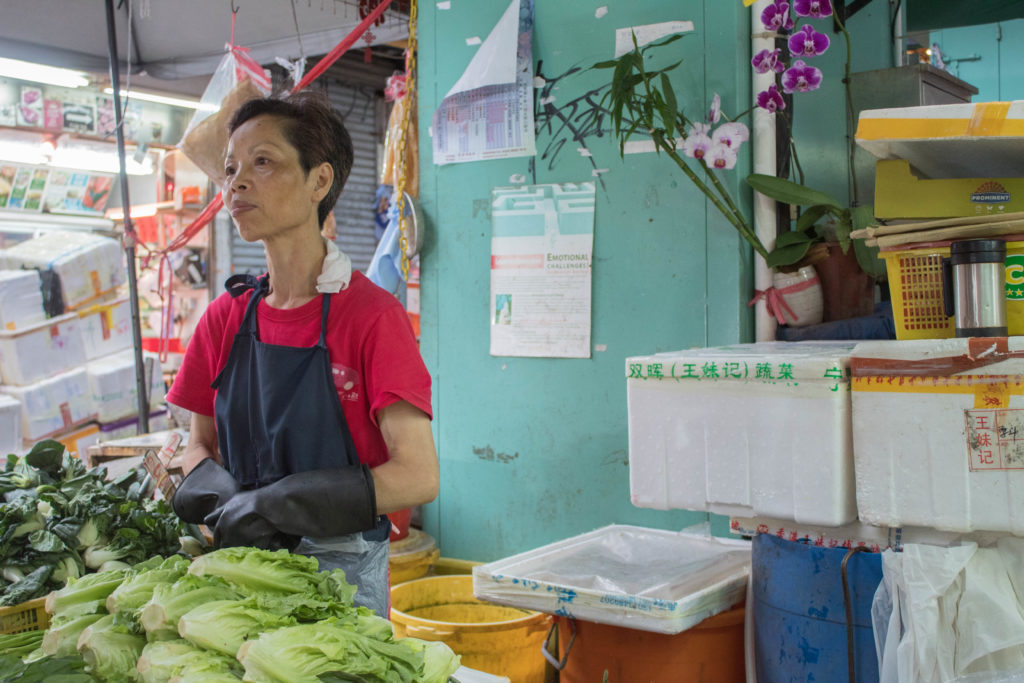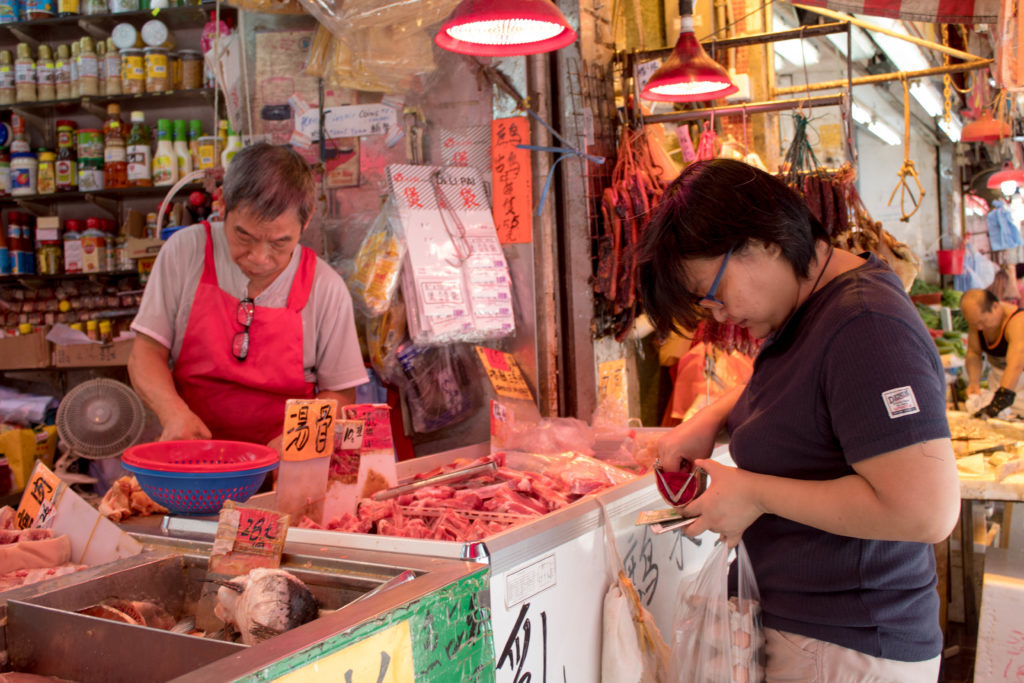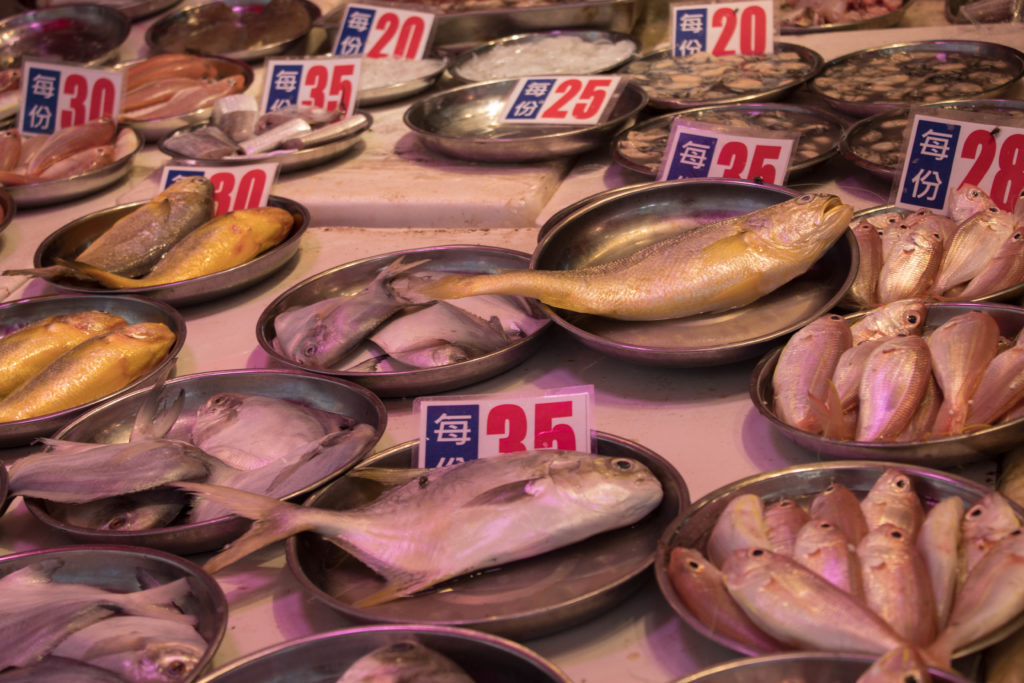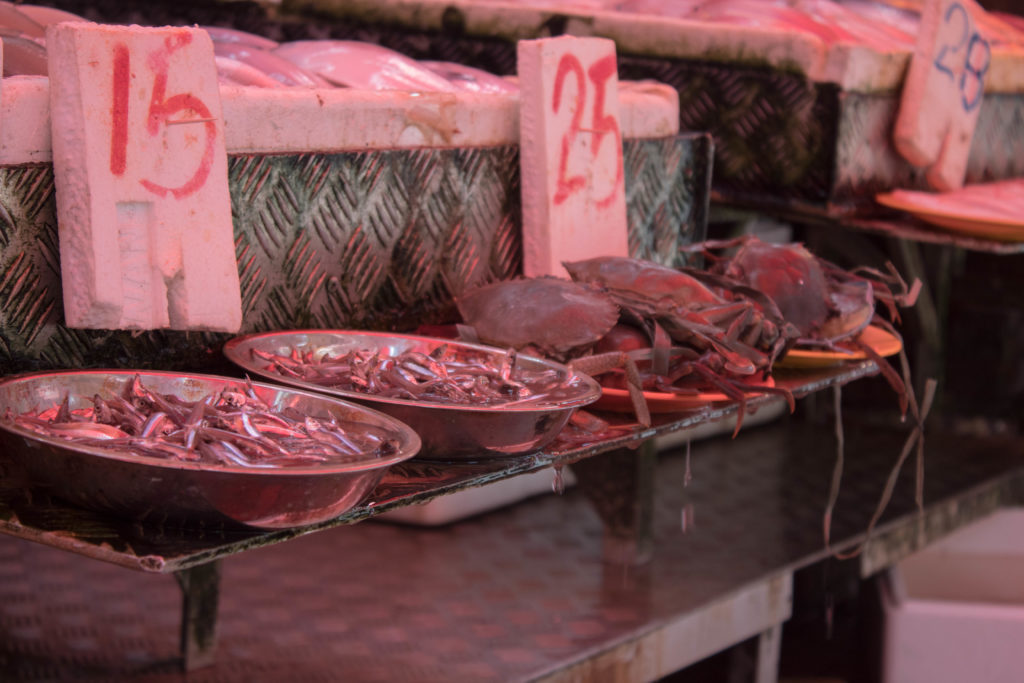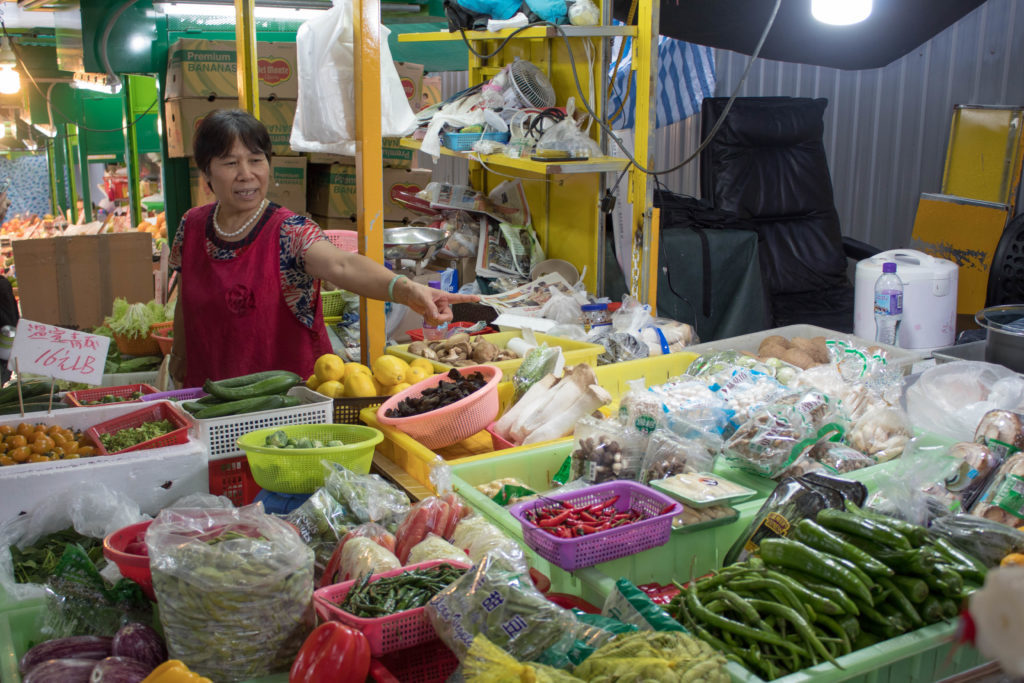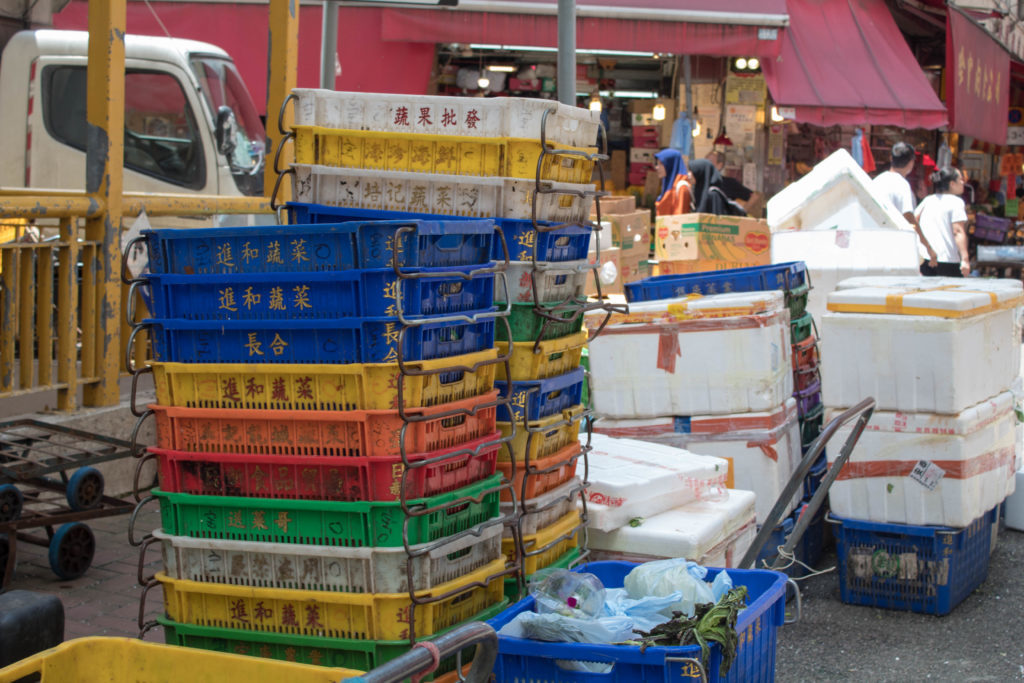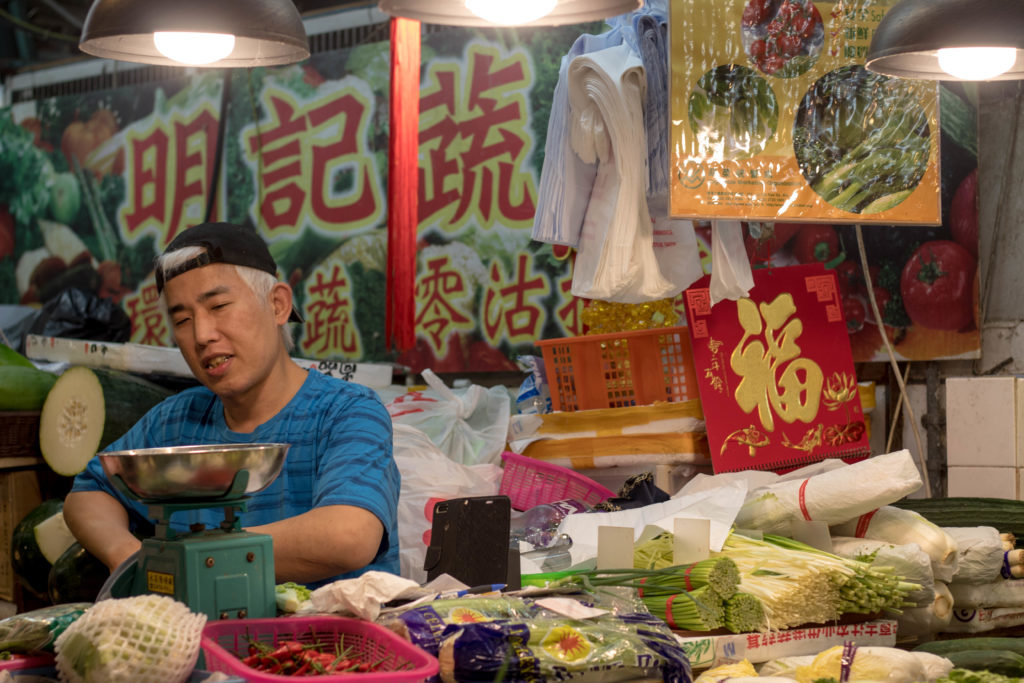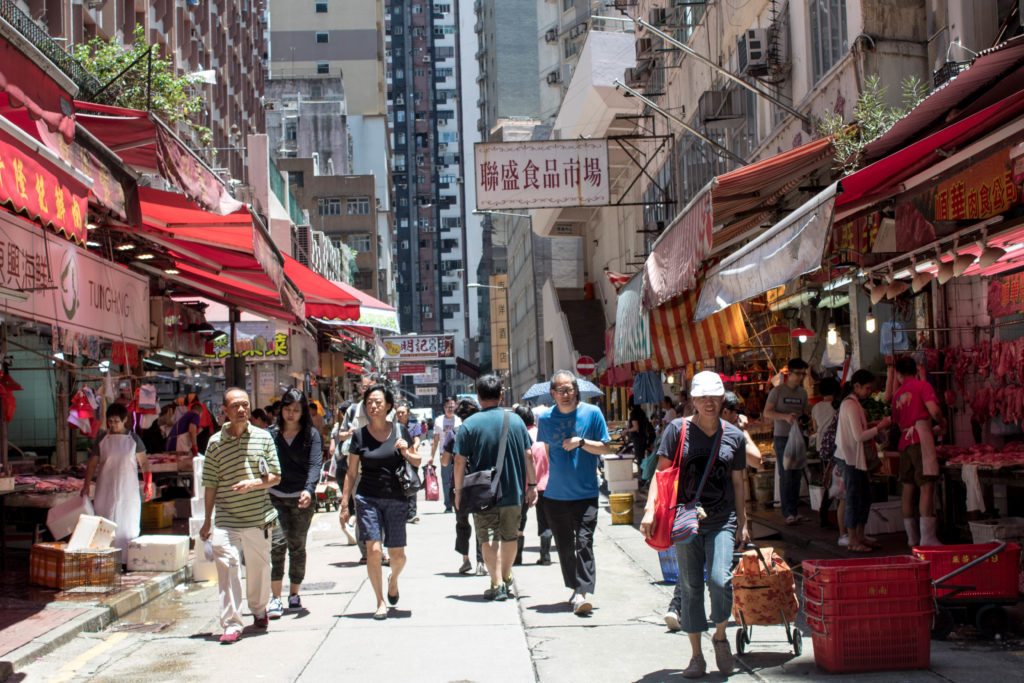Story and multimedia by Sophie Chong, Axile Gerona and Madison Wong
Reminiscing his childhood walks with his mother through wet markets, Dominic Leung can still clearly remember the harsh, extremely loud chopping sounds of butchers slicing pork on their cutting boards.
Leung said that him and his mother have visited wet markets in Tai Po, is a district in the New Territores of Hong Kong, for as long as he can remember.
Along with the sounds of chopping, vendors yelling from afar to advertise their prices, the echoes of live animals in stalls and the smells of unhygienic and rotten food, are all very lasting, vivid memories of Leung’s.
Wet markets are a significant part of Hong Kong’s culture and lifestyle. They stand out as one of many Chinese traditions that differ from Western lifestyles. With numerous wet markets around the city, they serve as an open food market where people can get the world at their table.
According to Hong Kong’s Food and Environmental Hygiene Department, the name “wet market” derives from the market grounds routinely getting sprayed and washed with water.
Lian Huan, a Graham Street Market vendor, described market stands as a symbol of nostalgia in the city.
“They are just like antiques. Even though they build new buildings, people want to keep this place as a reminder of history.”
Having grown up with a special admiration for these markets, Leung made photographing them his hobby. He said it makes him feel like he’s documenting his daily life. One of his collections even got published on Hong Kong Free Press, the city’s most popular independent English-language news outlet.
Leung said there are many aspects that make wet markets unique, one of them being the cultural role in Hong Kong’s visual landscape.
“If you think of Hong Kong, you think of tight spaces and crowds. But I think if you go to a wet market…It’s refreshing. You’re no longer surrounded by tall buildings,” he said.
The small and congested spaces in residents’ homes also interfere with food storage as the city doesn’t have the fridge or freezer space that North America does.
“You literally have to buy food on a daily basis to keep things fresh without cluttering your place. If you’re buying meat, you’ll probably cook it and use it that day without storing it,” said Celia Hu, editor-at-large at AFoodieBlog.
Though these markets continue to serve as a vital part of Asian culture, they are encountering obstacles in competing with corporate supermarkets such as Wellcome and ParknShop.
“Wet markets are very chaotic places, you’re constantly bumping into people, trying to not get mystery water spilled on you, lots of bags, and especially if you go to a fish market it’s quite gross,” she said.
Hu said that the older generation tends to go to wet markets more than the younger generation who prefer the convenience of clean, air-conditioned grocery stores that offer pre-packaged goods.
“Older people like going to the wet markets because it’s a way for them to interact. They know all the regulars, it’s great for them socially. It’s also cheaper than the stores but not bad in quality,” she said.
Despite the markets facing some challenges, Hu said that they remain an “integral part of local culture.”

